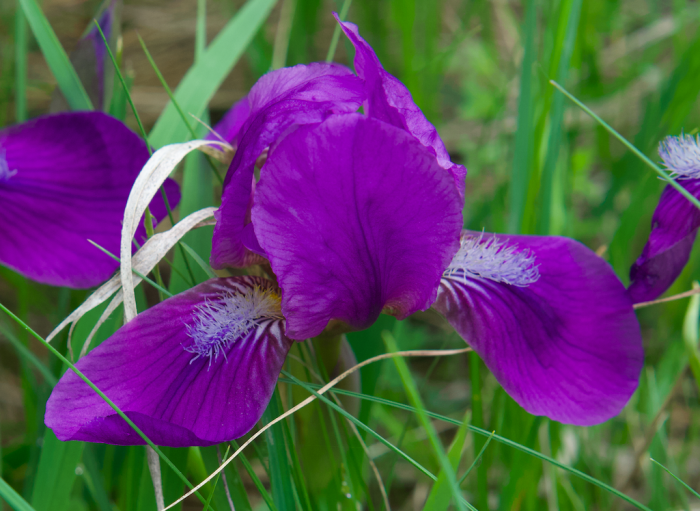Stool Iris
(Iris aphylla)
Stool Iris (Iris aphylla)
/
/

Conrad Altmann
CC BY 4.0
Image By:
Conrad Altmann
Recorded By:
Copyright:
CC BY 4.0
Copyright Notice:
Photo by: Conrad Altmann | License Type: CC BY 4.0 | License URL: http://creativecommons.org/licenses/by/4.0/ | Rights Holder: Conrad Altmann | Publisher: iNaturalist | Date Created: 2019-05-04T11:49Z |


















































Estimated Native Range
Summary
Iris aphylla, commonly known as Stool Iris, is a deciduous perennial herb that is native to steppe zones, meadows, and rocky slopes in Central and Eastern Europe. The plant features dark green to bright green, sword-shaped, long grass-like leaves that die back in winter. It has a slender stem with several branches and green to purplish spathes. The Stool Iris is notable for its 3–5 large, showy flowers in shades of bright purple to dark violet, blooming from spring to early summer, with occasional reblooms in autumn before the seed capsule forms.
The Stool Iris is valued for its striking flowers and is often used in temperate gardens for border planting or as a specimen. It is relatively low maintenance, requiring minimal care once established. The plant is drought-tolerant and can adapt to a range of soil types, from loamy to heavy, with pH levels from mildly acidic to mildly alkaline. While it can tolerate dry conditions, it performs best with average moisture levels. It is not suited to southern climates with prolonged hot and humid conditions. For optimal flowering, plant between August and September. Propagation can be done by division or from seed, with seeds sown from dry, mature capsules. In cultivation, it thrives in full sun and requires soils with medium to fast drainage. There are no major disease issues, but it can be susceptible to iris borer and root rot in overly wet conditions.CC BY-SA 4.0
The Stool Iris is valued for its striking flowers and is often used in temperate gardens for border planting or as a specimen. It is relatively low maintenance, requiring minimal care once established. The plant is drought-tolerant and can adapt to a range of soil types, from loamy to heavy, with pH levels from mildly acidic to mildly alkaline. While it can tolerate dry conditions, it performs best with average moisture levels. It is not suited to southern climates with prolonged hot and humid conditions. For optimal flowering, plant between August and September. Propagation can be done by division or from seed, with seeds sown from dry, mature capsules. In cultivation, it thrives in full sun and requires soils with medium to fast drainage. There are no major disease issues, but it can be susceptible to iris borer and root rot in overly wet conditions.CC BY-SA 4.0
Plant Description
- Plant Type: Herb
- Height: 0.5-1.5 feet
- Width: 0.3-0.5 feet
- Growth Rate: Moderate
- Flower Color: Purple, Blue
- Flowering Season: Spring, Summer
- Leaf Retention: Deciduous
Growth Requirements
- Sun: Full Sun
- Water: Medium
- Drainage: Medium, Fast
Common Uses
Bee Garden, Bird Garden, Butterfly Garden, Deer Resistant, Hummingbird Garden, Low Maintenance, Rabbit Resistant, Rock Garden, Showy Flowers
Natural Habitat
Steppe zones, meadows, and rocky slopes in Central and Eastern Europe
Other Names
Common Names: Leafless Iris, Table Iris, Nacktstengelige Schwertlilie, Kosaciec Bezlistny, Skomakariris
Scientific Names: , Iris aphylla, Iris aphylla subsp. hungarica, Iris aphylla var. hungarica, Iris falcata, Iris hungarica, Iris bohemica, Iris nudicaulis, Iris aphylla subsp. bohemica, Iris aphylla var. polonica
GBIF Accepted Name: Iris aphylla L.